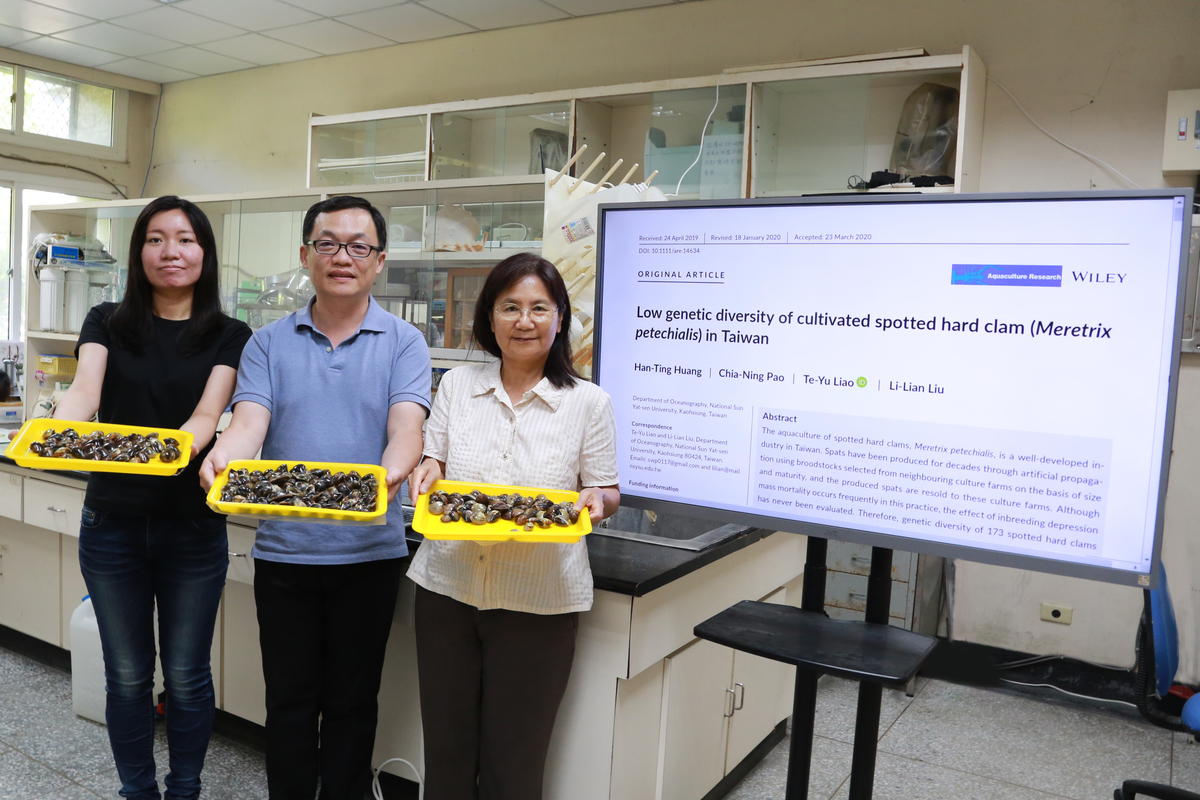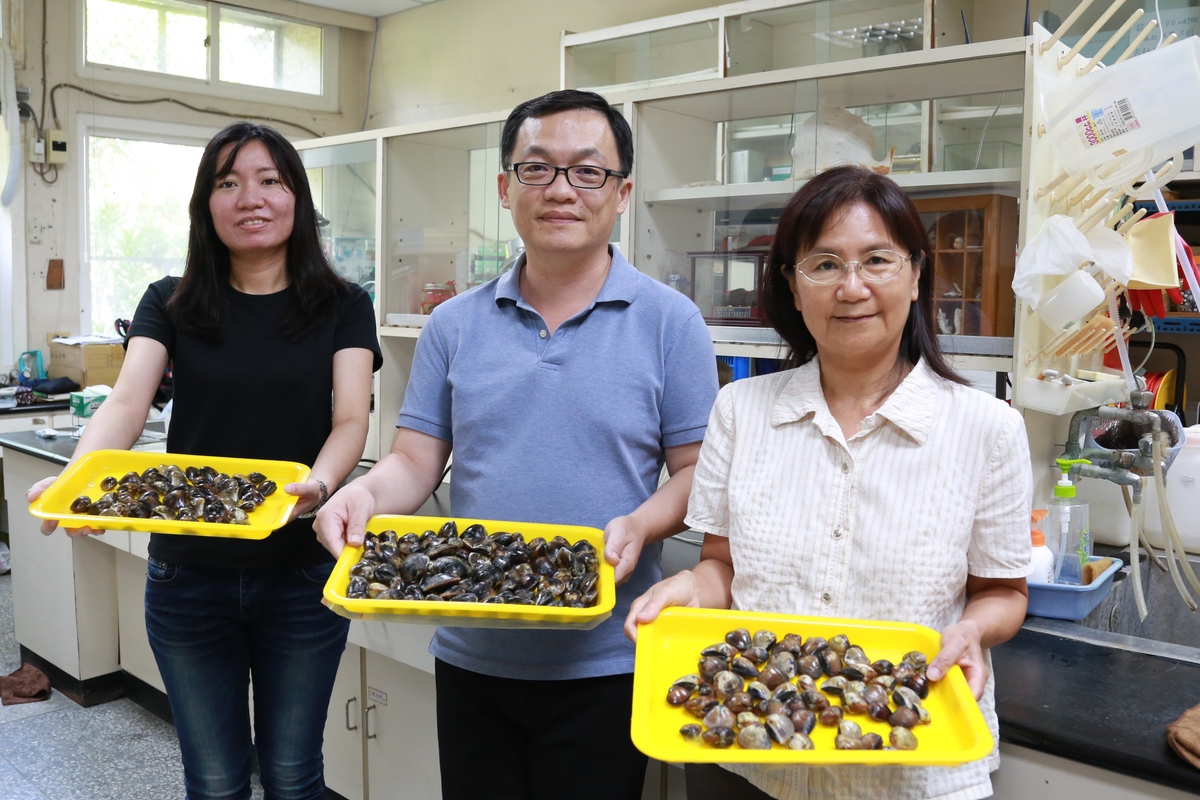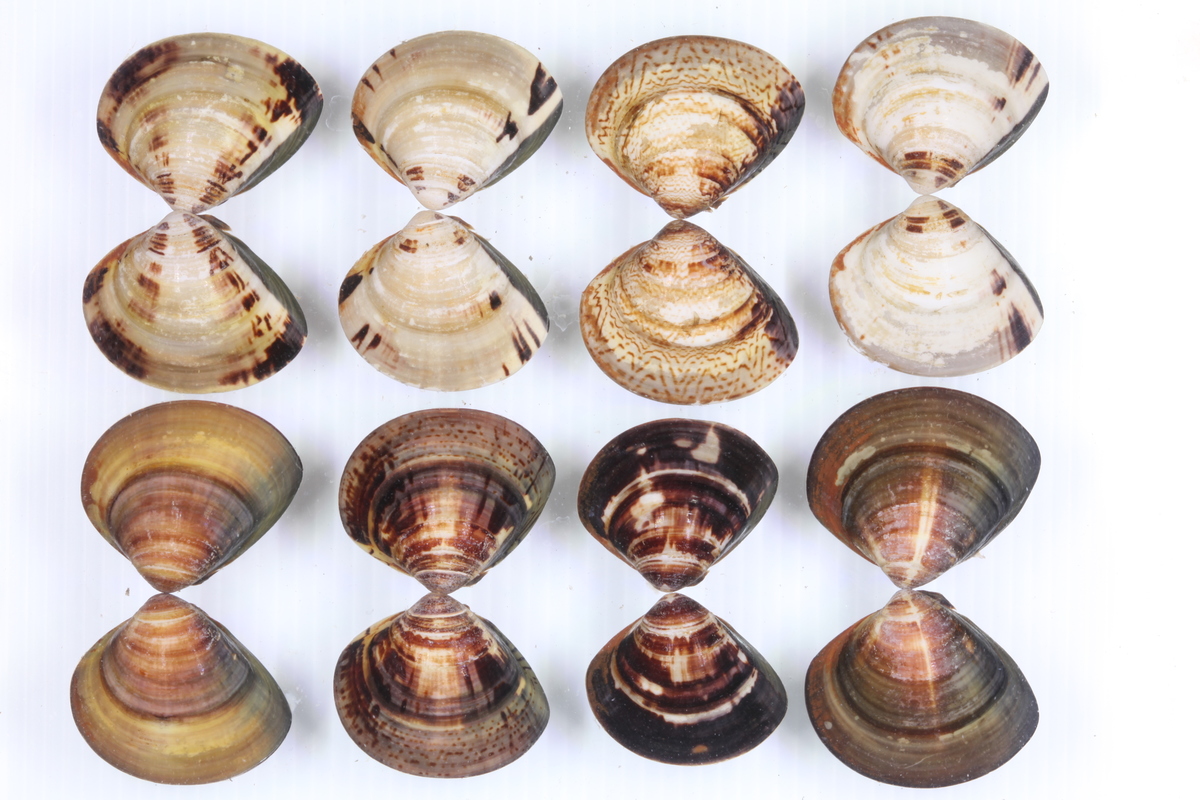Low genetic diversity of cultivated spotted hard clams may be unfavorable to their survival, NSYSU Department of Oceanography finds out



What factor causes mass mortality of spotted hard clams? The aquaculture of spotted hard clams is a well-developed industry in Taiwan; however, in recent years, farmers had to face such problems as clams’ mass mortality and slow growth. The results of Taiwan’s first research on the DNA of the cultivated spotted hard clams have just been published. The team of Associate Professor Te-Yu Liao and Professor Li-Lian Liu of the Department of Oceanography at NSYSU compared the genetic diversity of spotted hard clams bred in aquacultures in Taiwan and those living wildly off the coast of China, using molecular techniques, and found out that the genetic diversity of clams cultivated in Taiwan is low, which may be unfavorable to their survival, and recommended the introduction of wild individuals to the farms to diversify the gene pool in aquacultures and increase the competitiveness of the industry and improve the livelihood of fishermen.
Very popular in Taiwan, spotted hard clams are the main shelled animal farmed in aquacultures across the country, as they can be mass farmed in artificial environments. At present, the main region for artificial breeding of clams is Yunlin City, while coastal cities such as Changhwa, Yunlin, Chiayi, and Tainan are the most popular sites for clams’ culture. In recent years, the problem of mass mortality of farmed clams is getting worse and the underlying causes are still inconclusive. Fishery administration agencies and the academia enumerated possible influencing factors, including climate change, hypoxia, poor water quality, bacterial/virus infection, inadequate management, or inbreeding depression. Countries such as Japan, South Korea, China, and Thailand have studies on the genetic diversity of clams, while Taiwan did not conduct any similar study.
It is true that clam aquacultures in Taiwan suffer from low genetic diversity. Professor Liu and Associate Professor Liao with assistant Han-Ting Huang, and master program student Chia-Ning Pao formed a research team and spent more than a year collecting samples of wild clams from Kinmen, Tansui, and clams from different cultural farms and conducted a DNA investigation. The team found that the genetic diversity of spotted hard clams bred in aquacultures in Taiwan is much lower than in their wild populations off the coast of China. The team published their research paper in Aquaculture Research, an international journal. It is the first research on the genetic diversity of aquacultured clams in Taiwan.
Associate Professor Liao pointed out that clams have been artificially bred in Taiwan since 1980s. Spats have been produced for decades through artificial propagation using broodstocks selected from neighboring culture farms on the basis of size and maturity, and the produced spats are resold to these culture farms. The reasons for the high mortality of the clams are said to be complex and numerous; some breeders doubt that low genetic diversity is due to the unique clam artificial propagation practice in Taiwan, which results in a low survival rate of hatchery-produced clam spat; however, the amount of clams used for artificial propagation is huge and that the risk of inbreeding is not high. Thus, it is possible that the cause of the low genetic diversity of clams has its roots in the very beginning stage of the artificial-propagation industry – a too small number of parent clams. The team recommended the introduction of wild clams to aquacultures to diversify the genetic pool.
Professor Liu further explained that in the past, low genetic diversity did not pose a risk to the survival of aquaculture clams; however, with such major environmental challenges as global warming, ocean acidification, extreme rainfall, and the changes in the cultural environments, low genetic diversity of aquaculture clams is another aggravating factor, for which the clams may not adapt well to the present situation. Besides, the research team discovered that the clams farmed in Taiwan are probably not Meretrix lusoria, as was thought earlier, but rather M. petechialas; the classification still requires further studies. These findings on the genetic diversity of clams will help clam farmers and fishery agencies undertake measures to address the problem of high mortality of clams.
Read the article “Low genetic diversity of cultivated spotted hard clam (Meretrix petechialis) in Taiwan”: https://doi.org/10.1111/are.14634
Very popular in Taiwan, spotted hard clams are the main shelled animal farmed in aquacultures across the country, as they can be mass farmed in artificial environments. At present, the main region for artificial breeding of clams is Yunlin City, while coastal cities such as Changhwa, Yunlin, Chiayi, and Tainan are the most popular sites for clams’ culture. In recent years, the problem of mass mortality of farmed clams is getting worse and the underlying causes are still inconclusive. Fishery administration agencies and the academia enumerated possible influencing factors, including climate change, hypoxia, poor water quality, bacterial/virus infection, inadequate management, or inbreeding depression. Countries such as Japan, South Korea, China, and Thailand have studies on the genetic diversity of clams, while Taiwan did not conduct any similar study.
It is true that clam aquacultures in Taiwan suffer from low genetic diversity. Professor Liu and Associate Professor Liao with assistant Han-Ting Huang, and master program student Chia-Ning Pao formed a research team and spent more than a year collecting samples of wild clams from Kinmen, Tansui, and clams from different cultural farms and conducted a DNA investigation. The team found that the genetic diversity of spotted hard clams bred in aquacultures in Taiwan is much lower than in their wild populations off the coast of China. The team published their research paper in Aquaculture Research, an international journal. It is the first research on the genetic diversity of aquacultured clams in Taiwan.
Associate Professor Liao pointed out that clams have been artificially bred in Taiwan since 1980s. Spats have been produced for decades through artificial propagation using broodstocks selected from neighboring culture farms on the basis of size and maturity, and the produced spats are resold to these culture farms. The reasons for the high mortality of the clams are said to be complex and numerous; some breeders doubt that low genetic diversity is due to the unique clam artificial propagation practice in Taiwan, which results in a low survival rate of hatchery-produced clam spat; however, the amount of clams used for artificial propagation is huge and that the risk of inbreeding is not high. Thus, it is possible that the cause of the low genetic diversity of clams has its roots in the very beginning stage of the artificial-propagation industry – a too small number of parent clams. The team recommended the introduction of wild clams to aquacultures to diversify the genetic pool.
Professor Liu further explained that in the past, low genetic diversity did not pose a risk to the survival of aquaculture clams; however, with such major environmental challenges as global warming, ocean acidification, extreme rainfall, and the changes in the cultural environments, low genetic diversity of aquaculture clams is another aggravating factor, for which the clams may not adapt well to the present situation. Besides, the research team discovered that the clams farmed in Taiwan are probably not Meretrix lusoria, as was thought earlier, but rather M. petechialas; the classification still requires further studies. These findings on the genetic diversity of clams will help clam farmers and fishery agencies undertake measures to address the problem of high mortality of clams.
Read the article “Low genetic diversity of cultivated spotted hard clam (Meretrix petechialis) in Taiwan”: https://doi.org/10.1111/are.14634
Click Num:
Share
